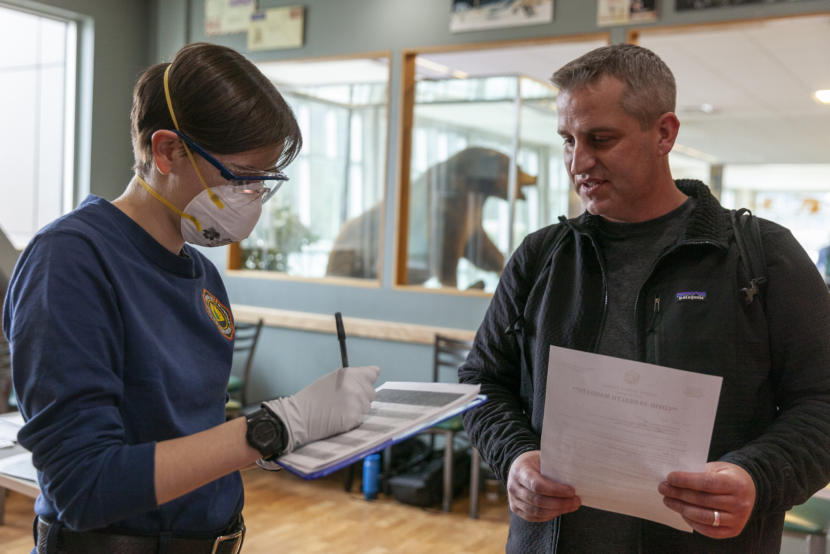
Alaska has upped the ante for travelers arriving from out of state — literally. As of August 11, non-resident arrivals must present proof of a negative covid test three days prior to entering the state or pay $250 for a test when they step off the plane.
The new mandate spells the end of free testing at Alaska airports for visitors to the state. Also gone are the option to test 5 days before arrival or to skip testing altogether and self-quarantine for 14 days. The mandate applies to all non-residents, no matter how they enter the state. It also requires all travelers to fill out a declaration on arrival.
Residents can still get the free airport test or opt to quarantine for two weeks.
The idea behind the mandate is to conserve testing resources for residents and reverse the steady increase in community spread seen throughout the state this summer.
State epidemiologist Dr. Joe McLaughlin says Alaska’s infection and death rate remains low compared to other states.
“However, as everybody knows, we went through a pretty big surge of cases over the last six weeks or so — certainly the last month — and that was very, very difficult for us to manage,” said McLaughlin during an Aug. 6 videoconference for the media with top medical experts in the state.
McLaughlin says contact tracing in particular was challenging during the summer surge, and that the demographics of the illness had changed since spring.
“The main drivers of the case counts that we’re seeing right now is young adults, people in their twenties, thirties, and even forties,” said McLaughlin. “They’re really driving the epidemic right now.”
In Sitka, a recent cluster of four cases involved a man in his forties, a woman in her twenties and two teenage girls.
McLaughlin said there wasn’t any remaining doubt about the efficacy of masks for preventing the spread of the disease, and that the scientific literature was conclusive. Dr. Anne Zink, Alaska’s chief medical officer, added that everything we’ve been doing with hygiene, hand washing, social distancing and masks remains critical to controlling the virus.
“I keep saying that this virus is a tiny little set of RNA molecules surrounded by a little fat structure that only lives if we let it, by going from person to person,” said Zink. “And so if we can just stay away from each other and do those things, we’re really in control of that.”
Zink said it was the job of the Department of Health and Social Services to follow the data, the science and the available information, and to present it “in the most transparent way that we can.” She suggested that mandates alone would not stop COVID-19.
“Travel restrictions, mandates, requests, requirements — all those things,” Zink said. “Bottom line, the virus does not care if it was mandated that you wore the mask or not, it cares that it can’t get to the next person.”
She added that “the more we can do as individual Alaskans to stand up and minimize the spread from one person to another, we are in control of this virus, and it’s not in control of us.”
